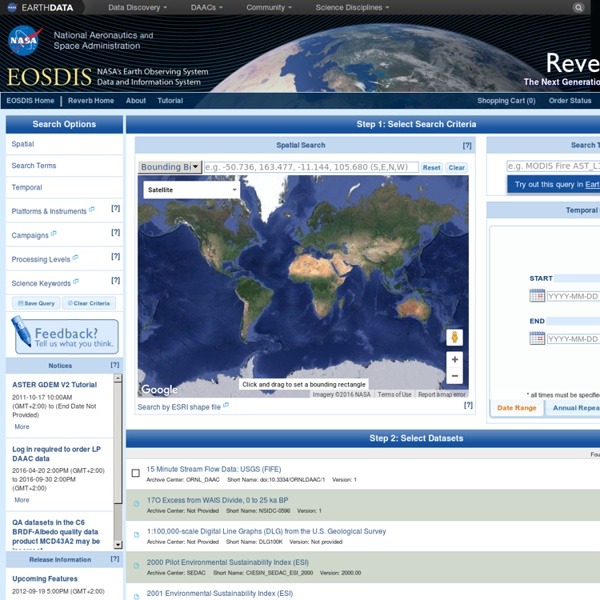



GEOSTATIONARY SATELLITE SERVER France - Jeu de données ASTER => conversion en courbe de niveau Bonjour, Je trouve que cela fait un peu brute de coffrage comme cela et j'ai essayé en appliquant un algo de lissage (celui de McMaster), c'est déjà plus sympa visuellement. (cf. Le trait gris est celui qui a reçu le lissage. Concernant ma fusion, effectivement, c'est la fusion d'une même altitude. Pour produire cela à l'échelle mondiale, je pense qu'en une nuit ou 24 heures, c'est réglé (avec un bon ordinateur). @bientôt, Loïc & Flo www.partir-en-vtt.com On jeudi 30 juin 2011, [hidden email] wrote: > Bonjour, > > J'ai regardé les données ASTER, c'est facilement exploitable. Qu'entends tu par fusion et sans fusion ? > S'il faut produire cela à l'échelle Française, je pourrai lancer le > traitement et vous faire un backup dans une base postgis par exemple. J'ai déjà ça pour une bonne partie de l'europe, mais je souhaiterais passer world wide pour mon rendu et je me heurte a des problèmes soit de méthodologie, soit de performance machine. -- sly qui suis-je :
Spectral Hourglass Wizard (Using ENVI) | Exelis VIS Docs Center Use the Spectral Hourglass Wizard to guide you step-by-step through the ENVI hourglass processing flow to find and map image spectral endmembers from hyperspectral or multispectral data. The Wizard displays detailed instructions and useful information for each function. From the Toolbox, select Spectral > Spectral Unmixing > Spectral Hourglass Wizard to start the workflow. The hourglass processing flow uses the spectrally over-determined nature of hyperspectral data to find the most spectrally pure, or spectrally unique, pixels (called endmembers) within the dataset and to map their locations and sub-pixel abundances. The name of the corresponding ENVI function appears at the top of the panel during each step. After starting the Spectral Hourglass Wizard, refer to the following sections for help:
CGIAR-CSI SRTM 90m DEM Digital Elevation Database AVHRR NDVI3g 30+ Years of LAI3g and FPAR3g Data Sets We are providing you free access to a 30+ year long global data sets of vegetation leaf area index (LAI3g) and fraction vegetation absorbed photosynthetically active radiation (FPAR3g). These data sets were derived from the third generation GIMMS NDVI3g data set (hence the suffix "3g"). The data sets are at 1/12 degree resolution, 15-day composites (2 per month) and span the period July 1981 to December 2011. Please note the following: (1) If you wish to submit an article to the special dedicated to NDVI3g/LAI3g/FPAR3g of the open source journal "Remote Sensing" you are welcome. (2) The article describing the LAI3g/FPAR3g by Zhu et al. can downloaded from the Special Issue (3) To obtain the data sets, please contact Ranga B.
Shuttle Radar Topography Mission U.S. Releases Enhanced Shuttle Land Elevation Data On September 23, 2014, the White House announced that the highest-resolution topographic data generated from NASA's Shuttle Radar Topography Mission (SRTM) in 2000 was to be released globally by late 2015. The announcement was made at the United Nations Heads of State Climate Summit in New York. See the full JPL Release 2014-321. Previously, SRTM data for regions outside the United States were sampled for public release at 3 arc-seconds, which is 1/1200th of a degree of latitude and longitude, or about 90 meters (295 feet). See an index map of the newly available full-resolution data. The new data are available for download from the USGS EROS Data Center - see Public Data Distribution for details. See the Africa image above and its caption at the PIA04965. These additional fly around videos further illustrate SRTM elevation data: India and the Himalaya Mountains, with Landsat satellite images draped over SRTM elevation data.